“Think about the kind of world you want to live and work in. What do you need to build that world? Demand that your teachers teach you that.”
– Peter Kropotkin
In July 2012 I had the opportunity to study abroad as part of my master’s program in Higher Education Leadership. One of our core classes, Multicultural Counseling, is actually a course in the Counseling program, so this was a great way to meet some students outside of my cohort and explore something new. Even better, the class was offered in Costa Rica! Our group of about 20 students spent a month preparing for the trip through readings and online discussions, then spent a week traveling in Costa Rica.
A major focus of this course was peace education and peaceful conflict resolution, and while we were in Costa Rica we spent several days at the University for Peace just outside San Jose. “UPEACE” is a university, mandated by the United Nations, that offers graduate degrees focused on topics including peace education, sustainability and human rights.

Our class sessions at UPEACE included a number of activities designed to get us thinking about new ways of relating and reacting to one another. One exercise got us thinking about our own privilege as we took steps forward and back based on certain advantages conferred on us throughout our lives. Another exercise, based on the Theater of the Oppressed, showed us creative ways to model intervention. We also spent time discussing the Earth Charter, “a universal expression of ethical principles to foster sustainable development.” How might you incorporate the principles of this document into your personal and professional life?

We also spent time getting to know Costa Rican culture and history. Before this trip, I didn’t know that Costa Rica had abolished its military in 1948 or that the country provides universal health care to its citizens. Once of the most powerful site visits we had in Costa Rica was to an inpatient mental health facility, where we learned about community-based models of mental health care. We got to interact with the doctors, patients and some families – which was particularly exciting for the MFT and Clinical Mental Health Counseling students on the trip. While in San Jose we also got a chance to visit El Rodeo school, a public elementary school just outside the city, to learn more about the country’s educational system.
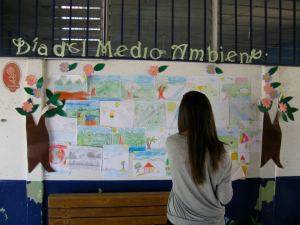
Our class purchased gifts, including school supplies, toys, and games, to donate to the school.

As we departed San Jose we took a few hours to visit an indigenous community, where we learned about the Quitirrisi people and the use of plants and natural remedies for common ailments.
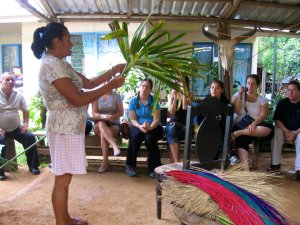
We also tried to learn how to weave palm fronds into baskets – with varying degrees of success!
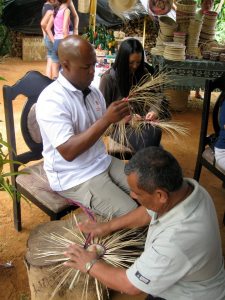
After our visit with the Quitirrisi, we piled into the bus for our long drive to Monteverde, a small town in the mountains of Costa Rica.

On our first morning in Monteverde we took a silent hike through the rainforest to reflect on what we had learned, as well as our place in nature.

In the afternoon, we had another school site visit to the Cloud Forest School.

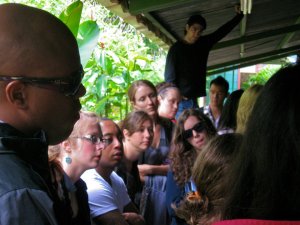
At the school, we participated in a service project planting trees. The man who led the project, a groundskeeper at the school, encouraged us to plant each tree while thinking of someone we love, so that our love can nourish the tree and help it grow.
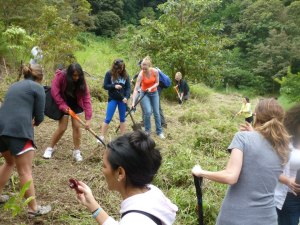
At the end of a very busy week we had one free day in Monteverde to relax! Some of my classmates went ziplining, but a group of us less fond of heights decided to go horseback riding in the mountains. The countryside was stunning and we were so high up that the clouds came in all around us. It was a wonderful ending to a great trip.

After returning to San Diego, our challenge was to integrate what we had learned into our own lives and work. Coming back to the US was a big adjustment and I felt fortunate to have the support and friendship of my classmates. Over the next month we worked to finish final reflection papers and craft presentations on how what we learned had made us better counselors, therapists, educators and leaders. Our final class was over a potluck in Mother Rosalie Hill Hall, and we were encouraged to make our presentations as creative as possible. Some students shared funny memories and quotes, others made videos and collages, and one classmate even made a large-scale model of the planet (created entirely from recyclable materials) that she could use to teach her students about the principles of the Earth Charter.
Personally, I was most inspired by one of our required readings, Half the Sky by Nicholas Kristof and Sheryl WuDunn. This book shares the stories of women who have faced (and in many cases, overcome) oppression around the world. I highly recommend it to anyone. So, my presentation contained an action plan to engage with these issues and do what I can to make a difference. Here are a few steps I took – and that you can take, too!
Make a microloan on Kiva.org. Since reading Half the Sky, I’ve made loans to three women: the owner of a small shawl-weaving business in Pakistan, a dairy farmer in Kenya, and the owner of a general store in the Phillipines. In fact, I’m now part of the SOLES Kiva team – along with our Dean and many of our faculty, staff, students and alumni!
Sponsor educational opportunities for a person overseas. In this course we discussed the importance of education, especially for women and girls, in strengthening communities and providing a route out of poverty. For a cost per month cheaper than my cell phone bill I was able to sponsor two young women. Through Women for Women International I sponsored Fjolla, a survivor of war in Kosovo who is now enrolled in a year-long leadership and job skills training program.
[youtube=http://www.youtube.com/watch?v=DqVvWWs3-VU]
Through Asha for Education I sponsored Soumiya, a 10-year-old girl in Tamil Nadu, India. Both sponsorships offer me the opportunity to communicate with the women I sponsor though letters and postcards – and part of my final presentation was to have my classmates sign a card for Fjolla, congratulating her on getting started with her training program. Here is a letter I recently received from Soumiya:
Continue to learn and educate yourself about these issues. A few months after returning from Costa Rica, a group of my classmates and I got together to attend a film screen and community discussion of the Half the Sky documentary at a San Diego library. I have also been working to tie principles of peace-building into my work. It’s easy to donate to a cause or watch a documentary without really becoming invested or gaining deep understanding of the issues. It’s also easy to view those who benefit from these programs as victims instead of as equal and active participants in their own development. I don’t want that to happen. I also don’t want to become complacent, or allow this to become a passing, short-term project. I’m fortunate to be a part of an institution that places a very high value on changemaking and social justice initiatives, so I know I can count of the support of my classmates and colleagues as I grow in this work. aYou can learn more about USD’s designation as an Ashoka Changemaker university here.



